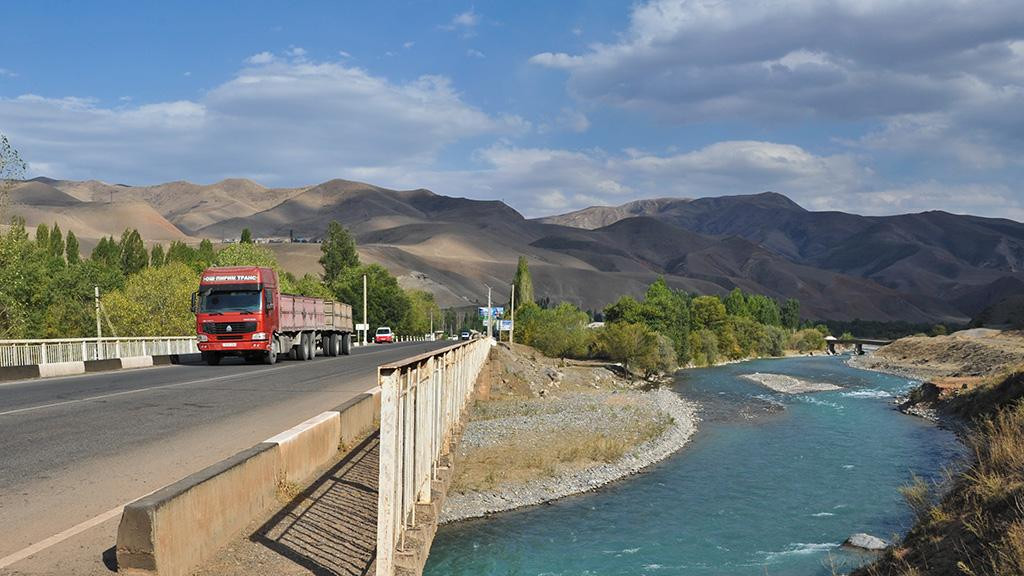Cooperation can cut carbon footprint of trade in CAREC region: ADB | The Express Tribune
Cooperation can cut carbon footprint of trade in CAREC region: ADB The Express Tribune


Closer Cross-Border Collaboration and Trade Policy Reforms Can Reduce Carbon Footprint in Central Asia

At the 57th annual meeting of the Asian Development Bank (ADB), officials emphasized the importance of closer cross-border collaboration and trade policy reforms in Central Asia and its neighboring countries to reduce the carbon footprint of trade and value chains. This region is known for its high energy-intensive manufacturing activities, which contribute significantly to emissions.
Harmonizing Policies for Sustainable Trade
The ADB-supported Central Asia Regional Economic Cooperation (CAREC) Programme plays a crucial role in harmonizing policies and standards to increase trade while making supply chains less carbon-intensive and more resilient. ADB Director General for Central and West Asia, Yevgeniy Zhukov, stated that this approach can help achieve sustainable development goals.
Impact of Trade on Carbon Emissions
Although trade has been instrumental in driving economic growth and development, it has also led to a significant increase in carbon emissions. According to the World Trade Organization, approximately 20%–30% of global carbon dioxide emissions are associated with global trade and supply chains.
The statement released by ADB highlighted that most CAREC countries specialize in emission-intensive sectors such as electricity, chemicals, and mining. Consequently, CAREC has one of the highest shares of carbon dioxide emissions in the world in value-added manufacturing.
Opportunities for Green Transition
CAREC countries possess vast reserves of critical minerals that are essential for the energy transition, including wind turbines, electric vehicles, and battery storage. These countries have the potential to shift away from fossil fuels and capitalize on market opportunities arising from the energy transition.
However, a regional approach is necessary to develop green standards that enable businesses and producers in CAREC countries to remain competitive amidst growing environmental standards and carbon pricing policies.
Coordinated Policies for Decarbonization
The statement emphasized the importance of coordinated regional decarbonization policies and carbon pricing. These measures can lead to better utilization of regional resources, enhanced economic integration, reduced carbon leakage, and increased technology transfer.
Supporting Climate Financing and Resilience
ADB’s Regional Cooperation Head for Central and West Asia, Lyaziza Sabyrova, highlighted that CAREC is working with its development partners to increase climate financing. This support will accelerate member countries’ transition to clean energy and strengthen their resilience against climate change impacts.
About the CAREC Programme
The CAREC Programme is a partnership between countries in Central Asia, the Caucasus, and East Asia, along with development partners. Its objective is to promote sustainable development, accelerate economic growth, and reduce poverty. ADB hosts the CAREC Secretariat.
About the Asian Development Bank (ADB)
ADB, established in 1966, is committed to achieving a prosperous, inclusive, resilient, and sustainable Asia and the Pacific. It is owned by 68 members, with 49 from the region. ADB’s efforts are focused on eradicating extreme poverty while sustaining its commitment to sustainable development.
SDGs, Targets, and Indicators
-
SDG 9: Industry, Innovation, and Infrastructure
- Target 9.4: By 2030, upgrade infrastructure and retrofit industries to make them sustainable, with increased resource-use efficiency and greater adoption of clean and environmentally sound technologies and industrial processes.
- Indicator: Carbon footprint reduction in trade and value chains in Central Asia and its neighbors.
-
SDG 13: Climate Action
- Target 13.2: Integrate climate change measures into national policies, strategies, and planning.
- Indicator: Adoption of regional decarbonization policies and carbon pricing in CAREC countries.
-
SDG 17: Partnerships for the Goals
- Target 17.16: Enhance the global partnership for sustainable development, complemented by multi-stakeholder partnerships that mobilize and share knowledge, expertise, technology, and financial resources.
- Indicator: Increase in climate financing to support member countries’ transition to clean energy and resilience against climate change impacts.
Table: SDGs, Targets, and Indicators
| SDGs | Targets | Indicators |
|---|---|---|
| SDG 9: Industry, Innovation, and Infrastructure | Target 9.4: By 2030, upgrade infrastructure and retrofit industries to make them sustainable, with increased resource-use efficiency and greater adoption of clean and environmentally sound technologies and industrial processes. | Carbon footprint reduction in trade and value chains in Central Asia and its neighbors. |
| SDG 13: Climate Action | Target 13.2: Integrate climate change measures into national policies, strategies, and planning. | Adoption of regional decarbonization policies and carbon pricing in CAREC countries. |
| SDG 17: Partnerships for the Goals | Target 17.16: Enhance the global partnership for sustainable development, complemented by multi-stakeholder partnerships that mobilize and share knowledge, expertise, technology, and financial resources. | Increase in climate financing to support member countries’ transition to clean energy and resilience against climate change impacts. |
Analysis
The issues highlighted in the article are connected to multiple Sustainable Development Goals (SDGs) and their corresponding targets:
1. SDG 9: Industry, Innovation, and Infrastructure
The article emphasizes the need for cross-border collaboration and trade policy reform in Central Asia to reduce the carbon footprint of trade and value chains. This aligns with SDG 9, which aims to promote sustainable industrialization, foster innovation, and upgrade infrastructure.
2. SDG 13: Climate Action
The article discusses the importance of regional decarbonization policies and carbon pricing to reduce carbon dioxide emissions and promote the energy transition. This aligns with SDG 13, which focuses on taking urgent action to combat climate change and its impacts.
3. SDG 17: Partnerships for the Goals
The article highlights the role of development partners in supporting the CAREC Program’s efforts to increase climate financing and accelerate the transition to clean energy. This aligns with SDG 17, which emphasizes the importance of global partnerships for sustainable development.
The specific targets and indicators identified based on the article’s content are as follows:
Target 9.4: By 2030, upgrade infrastructure and retrofit industries to make them sustainable, with increased resource-use efficiency and greater adoption of clean and environmentally sound technologies and industrial processes.
The article suggests that harmonizing policies and standards through the ADB-supported CAREC Program can help make supply chains less carbon-intensive and more resilient. The carbon footprint reduction in trade and value chains serves as an indicator for progress towards this target.
Target 13.2: Integrate climate change measures into national policies, strategies, and planning.
The article emphasizes the need for coordinated regional decarbonization policies and carbon pricing in CAREC countries. The adoption of these policies and pricing mechanisms serves as an indicator for progress towards this target.
Target 17.16: Enhance the global partnership for sustainable development, complemented by multi-stakeholder partnerships that mobilize and share knowledge, expertise, technology, and financial resources.
The article mentions the support from development partners in increasing climate financing to accelerate the transition to clean energy and strengthen resilience against climate change impacts. The increase in climate financing serves as an indicator for progress towards this target.
Copyright: Dive into this article, curated with care by SDG Investors Inc. Our advanced AI technology searches through vast amounts of data to spotlight how we are all moving forward with the Sustainable Development Goals. While we own the rights to this content, we invite you to share it to help spread knowledge and spark action on the SDGs.
Fuente: tribune.com.pk

Join us, as fellow seekers of change, on a transformative journey at https://sdgtalks.ai/welcome, where you can become a member and actively contribute to shaping a brighter future.







